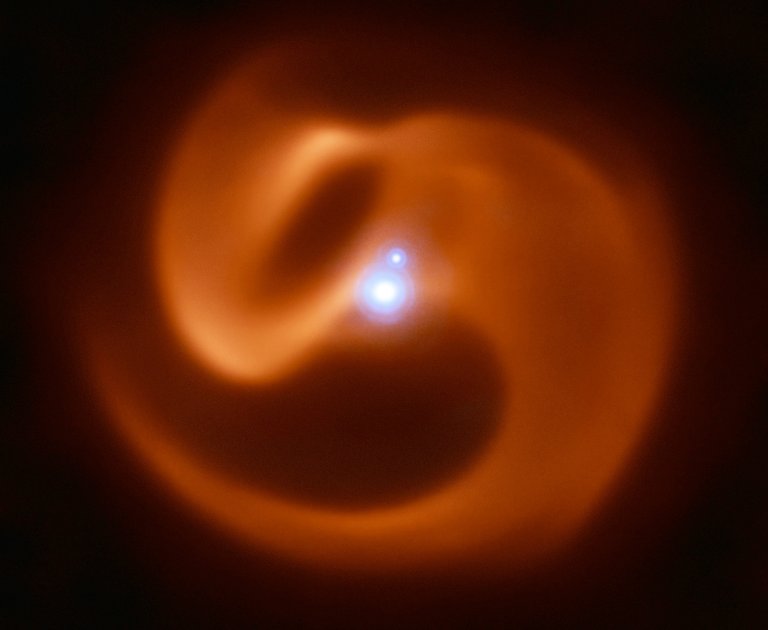A dust mill to investigate the death of great stars

They have found a dust mill in our galaxy. Produced by two high-mass stars in the final phase of life, and measuring the speed of gas and dust they release, researchers have concluded that at least one of the two could cause gamma ray bursts when it explodes as a supernova. The finding has been made known in Nature Astronomy.
The star system is called apep. It is 8,000 light years from Earth and researchers are surprised by its brightness and how they have not found it before. They are the Wolf-Rayet stars, great masses in the final phase of life. They emit winds of dust and gas that form a gigantic fog of several years of light that surrounds the stars. Due to the movement of the stars, the dust mist acquires the shape of a mill.
In the Apep system nebula it has been measured that the gaseous winds reach incredible speeds: 3,400 km/s. The dust moves much more slowly at about 570 km/s. This speed difference may be because one of the two stars is spinning very fast. And it is believed that fast-spinning Wolf-Rayet stars can cause long-lasting gamma ray bursts when exploding. The explosion of gamma rays is one of the energetic phenomena that occur in the universe and whose origin is not well known. However, Apep will be very useful to investigate the death of large mass stars.
Buletina
Bidali zure helbide elektronikoa eta jaso asteroko buletina zure sarrera-ontzian











